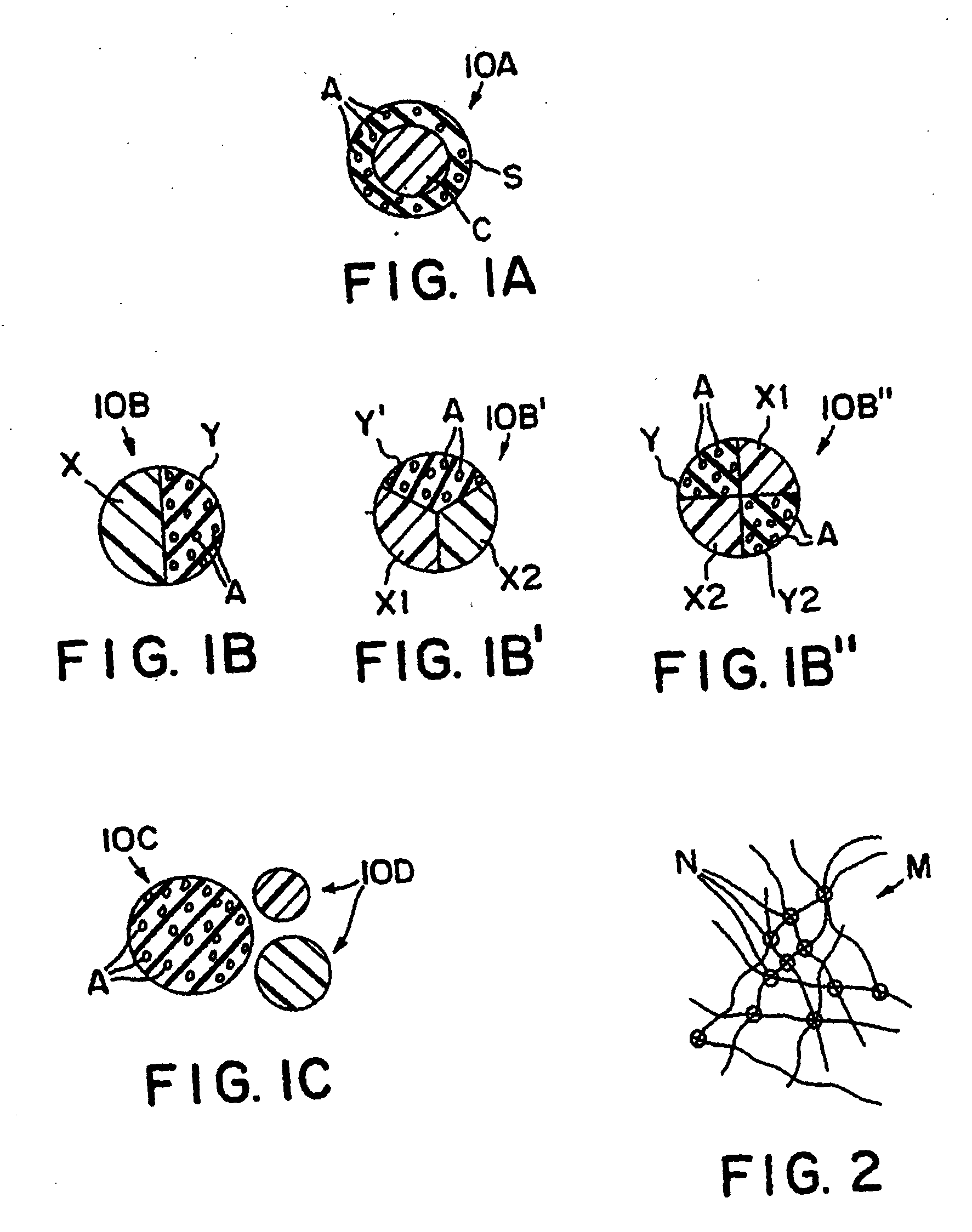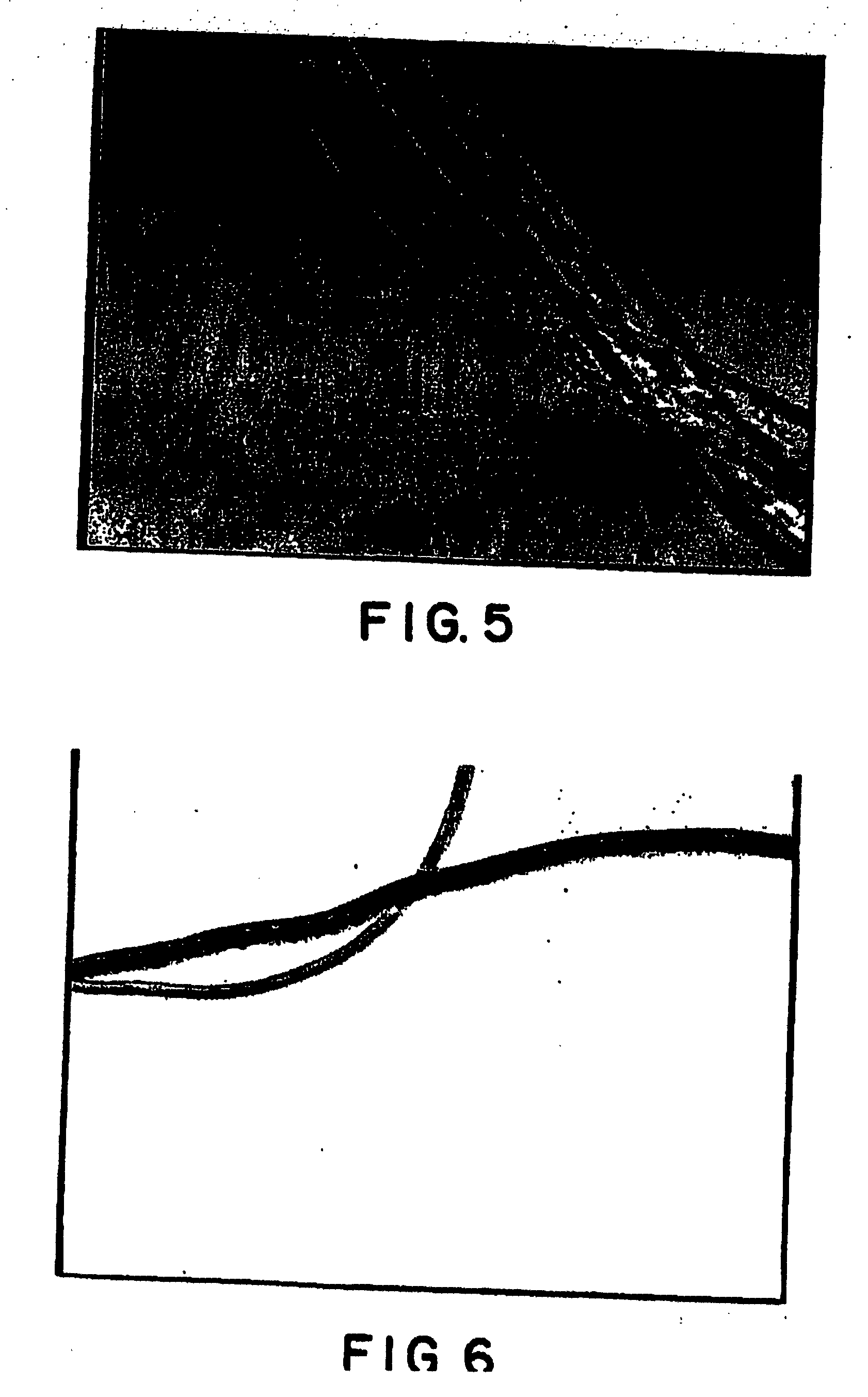Anti-microbial fiber and fibrous products
a fiber and fibrous technology, applied in the field of products, can solve the problems of compromising cell wall processes including basic transportation processes, product cannot be labeled 100% cotton, and can no longer be used to label 100% cotton, etc., and achieves the effect of being highly resistant to washing or wearing off and being effectiv
- Summary
- Abstract
- Description
- Claims
- Application Information
AI Technical Summary
Benefits of technology
Problems solved by technology
Method used
Image
Examples
example 1
[0130] The anti-microbial fiber of the present invention was used in the making of a mattress pad. In this example, 15% of a 6.7 denier 76 mm cut length natural white fiber was used as a homofilament with zeolite of silver as the anti-microbial agent and 15% of a bi-component fiber was used together with 70% PET 6×3 T295 in a blend in which the zeolite of silver comprised 0.9% of the fiber. The blend of this fiber was made into a batt of about 1-1½″ thickness of nonwoven material which was then placed between two layers of woven fabric to form a mattress pad. When tested using the shake flask test this provided a 99.99% microbial kill ratio.
[0131] There are other examples in which all of the parameters of Example 1 were used and in each of which there was 15% of a bi-component fiber used. Again the zeolite of silver comprised 0.9% of the fiber. The percentage of the anti-microbial fiber ranged from 20% to 40% and the PET ranged from 45% to 65%. In all examples the microbial kill ra...
example 1a
[0132] In this example, 35% of a 6.7 denier 51 mm cut length natural white fiber was used in a sheath / core bi-component configuration with zeolite of silver as the anti-microbial agent and 15% of another bi-component fiber was used together with 50% PET 6×3 T295 in a blend in which the zeolite of silver comprised 1.8% of the fiber. The blend was then prepared as in Example 1 and when tested using the shake flask test, there was a 99.9% microbial kill ratio.
[0133] A second group similar to the first one was prepared in which the sheath / core bi-component fiber with zeolite of silver as the anti-microbial agent comprised from 10 to 35% of the fiber blend, 15% of another bi-component fiber was used and from 50 to 75% of PET 6×3 T295 was used. The zeolite of silver comprised 0.75% of the fiber. In the shake flask test, there was a 99.99% microbial kill ratio.
example 2
[0134] In this example, 15% of a 3.5 denier 38 mm cut length PETG fiber was used as a homofilament with zeolite of silver as the anti-microbial agent. 85% PET fiber was blended with the PETG anti-microbial fiber to form a blend in which the zeolite of silver comprised 1.8% of the fiber. The fiber was made into a wall covering and was tested by the shake flask test, which provided a microbial kill rate of 99.99%
[0135] A modified version was prepared the same way except that there was only 10% fiber with zeolite of silver in the blend and 90% PET fiber was used. After the fiber was made into a wall covering, this too provided a 99.99% microbial kill rate using the shake flask method of testing.
[0136] A further modified version was used in which there was only 5% fiber having zeolite of silver in the blend and 95% PET fiber in the blend. The testing, after the fiber was used in a wall covering, again provided a 99.99% microbial kill rate for bacteria.
[0137] The fibers described abov...
PUM
| Property | Measurement | Unit |
|---|---|---|
| Length | aaaaa | aaaaa |
| Linear density | aaaaa | aaaaa |
| Electrical resistance | aaaaa | aaaaa |
Abstract
Description
Claims
Application Information
 Login to View More
Login to View More - R&D
- Intellectual Property
- Life Sciences
- Materials
- Tech Scout
- Unparalleled Data Quality
- Higher Quality Content
- 60% Fewer Hallucinations
Browse by: Latest US Patents, China's latest patents, Technical Efficacy Thesaurus, Application Domain, Technology Topic, Popular Technical Reports.
© 2025 PatSnap. All rights reserved.Legal|Privacy policy|Modern Slavery Act Transparency Statement|Sitemap|About US| Contact US: help@patsnap.com



